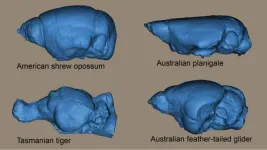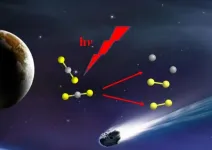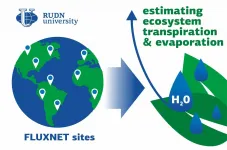New AI-severity score COVID-19 integrating CT images published to Nature Communications
Owkin shares COVID-19 initiative updates and results
2021-01-28
(Press-News.org) Paris, France, January 27th 2021 -- COVID-19 vaccine distribution has begun across the globe, while many countries are still struggling with the rampant rise of infections. Owkin, a French-American startup pioneering AI and Federated Learning in medical research, has been focusing it's COVID-19 research efforts on aspects of the pandemic that still require much public health attention, despite the arrival of an effective vaccine.
Efforts to support frontline health systems as they devote their resources to the influx of COVID-19 related hospitalizations, have resulted in the AI-Severity Score, published in Nature Communications this week . This machine learning model, trained on multimodal data sets that include CT scans of the lungs (a routine procedure upon admission), is plug and play and able to predict the severity of a patient's disease prognosis with a performance that surpasses all other currently published score benchmarks. Use of these scores supports hospital resource management and planning, a sometimes overlooked function that, when managed well, saves lives. This research was made possible through a consortium, called ScanCovIA, made up of Institut Gustave Roussy, Kremlin-Bicêtre APHP, Owkin, and Digital Vision Center of CentraleSupélec and INRIA.
Additionally, Owkin has been developing other machine learning models to discover more coronavirus epitopes that are most likely to be effective in future vaccines As the virus continues to mutate, we don't yet know how long the current vaccines will remain efficacious or if, like the flu, they will require annual or semi annual development. Furthermore, it may be possible to develop vaccines for genes within the virus's DNA that are more stable, and less likely to mutate. Epitope prediction can speed vaccine development by narrowing the field of epitopes to test in the lab, and it can diversify our defenses against the virus's future mutations. Furthermore, these models can be deployed outside vaccine research; they can also be used in oncology research. The ultimate aim of machine learning for epitope discovery is to have a better understanding of the immune response--these features of the model have their place across the spectrum of precision medicine research.
INFORMATION:
About Owkin
The French-American startup specialises in AI and Federated Learning for medical research. It's multidisciplinary team of 100 people has expertise in the analysis of real-world data and experience leveraging advanced machine learning technologies on multimodal cohorts. Co-founded in 2016 by Dr Thomas Clozel M.D., a clinical research doctor and former assistant professor in clinical hematology, and Dr Gilles Wainrib, Ph.D., a pioneer in the field of artificial intelligence in biology, Owkin has recently published ground breaking research at the frontier of AI and medicine in Nature Medicine, Nature Communications and Hepatology.
The Owkin platform connects several of the largest medical research centres and pharmaceutical companies in Europe and the US within a federated research ecosystem. Owkin unlocks medical insights from siloed datasets to help life science companies discover new drugs, identify novel biomarkers, optimise clinical trials and accelerate patient diagnosis.
To learn more visit http://www.owkin.com
ELSE PRESS RELEASES FROM THIS DATE:
2021-01-28
Seawater makes up about 96% of all water on earth, making it a tempting resource to meet the world's growing need for clean drinking water and carbon-free energy. And scientists already have the technical ability to both desalinate seawater and split it to produce hydrogen, which is in demand as a source of clean energy.
But existing methods require multiple steps performed at high temperatures over a lengthy period of time in order to produce a catalyst with the needed efficiency. That requires substantial amounts of energy and drives up the cost.
Researchers from the University of Houston have reported an oxygen evolving catalyst that takes just minutes to grow at room temperature on commercially available nickel foam. ...
2021-01-28
Mason scientists employ a rapid-result, saliva-based test that significantly expands testing capacity, and an antibody test that can track vaccine response.
George Mason University announces it is introducing a rapid-result, saliva-based COVID-19 test that will greatly expand testing capabilities on its campuses this spring. The effort, led by Mason's faculty, is part of a comprehensive program to better track and control the virus on campus.
Mason scientists, who are pushing the boundaries of technologies that are keeping Mason's campuses safe, are ...
2021-01-28
The main culprit in cancer is healthy cells that have gone rogue and acquire the ability to divide uncontrollably. These cells acquire growth advantages over normal cells and manipulate their environment by altering the cellular pathways involved in growth and metabolism. Over the past few decades, various altered pathways and proteins have been identified as targets for therapeutic interventions. However, what remains challenging is selectively targeting cancer cells and ensuring that the drug reaches the tumor in adequate amounts, without severely affecting normal cells. And in this regard, biocompatible delivery vehicles (which are non-toxic to normal cells) can be useful.
One such potential candidate is "porphyrins," a group of organic cyclic compounds that form the ...
2021-01-28
Being stretchy and squeezable may be the key to finding space for the brain in mammals, including humans.
An international study, co-led by Flinders University's Vera Weisbecker, has revealed that marsupial mammals like possums, kangaroos, and wombats appear to have a lot of flexibility when it comes to accommodating their brains into their skulls.
"The brain is one of the heaviest parts of the head, particularly in smaller mammals. But it needs to be placed in a way that doesn't interfere with the many vital functions of the head, such as seeing, hearing, smelling and of course feeding," says Dr. Weisbecker.
"Stowing" a large brain ...
2021-01-28
WASHINGTON -- Researchers have developed a new approach that improves the image quality and contrast for holographic displays. The new technology could help improve near-eye displays used for virtual and augmented reality applications.
"Augmented and virtual reality systems are poised to have a transformative impact on our society by providing a seamless interface between a user and the digital world," said research team member Jonghyun Kim from technology company NVIDIA and Stanford University. "Holographic displays could overcome some of the biggest ...
2021-01-28
(Singapore--January 28, 2021 11:00 p.m. SPT/10:00 a.m. EST)----Several leading international lung cancer researchers at a press briefing held by the International Association for the Study of Lung Cancer today, presented compelling new data revealing that factors of race, gender, sexual orientation and income continue to be significant barriers to those living with lung cancer. The press briefing is part of the IASLC's World Conference on Lung Cancer 2020 Singapore.
The press briefing is moderated by IASLC Communications Committee Chair Dr. Anne-Marie Baird, senior research fellow at Trinity College in ...
2021-01-28
Clear rules for engineering transgenes that can be inserted and propagated over multiple generations of nematodes include ways to protect inserted genes from the organism's natural defenses against foreign DNA. Developed by KAUST researchers, the rules have implications for many research fields, including gene therapy development.
Scientists often study biological processes, such as normal and mutant gene functions, in the worm Caenorhabditis elegans because it has many genes and molecular pathways in common with humans. Specific gene functions can be investigated by injecting DNA into the worm's reproductive organs, where it links into what is known as an extra-chromosomal array. This array is eventually incorporated into the nucleus, where it is duplicated ...
2021-01-28
A team led by Prof. SU Bing from the Kunming Institute of Zoology (KIZ) of the Chinese Academy of Sciences (CAS), Prof. LI Cheng from Peking University, and Prof. ZHANG Shihua from the Academy of Mathematics and Systems Science of CAS has reported the highest resolution by far of the 3D genome of the primate brain, and demonstrated the molecular regulatory mechanisms of human brain evolution through cross-species multi-omics analysis and experimental validation. The study was published in Cell.
The unique pattern of human brain development stems from accumulated genetic changes during human evolution. Among the huge number of diverging genetic changes, only a small portion of the between-species ...
2021-01-28
Studying the creation and evolution of sulfur-containing compounds in outer space is essential for understanding interstellar chemistry. CS2 is believed to be the most important molecule in comet nuclei, interstellar dust, or ice cores. CS and S2 are the photodissociation fragments of CS2.
Forty years ago, the emission spectra of only CS and S2 species, and not those of CS2 species, were observed from several comets by the International Ultraviolet Explorer satellite. The photodissociation mechanism of CS2 molecules remains unclear, and S2 fragments have not been experimentally observed before.
Recently, a team led by Prof. YUAN Kaijun from the Dalian Institute of Chemical Physics (DICP) of the Chinese Academy of Sciences (CAS), in cooperation with Prof. WANG Xing'an's group ...
2021-01-28
An ecologist from RUDN University together with colleagues from 14 countries compared three methods for estimating ecosystem transpiration in a study. In the first ever research with such a comprehensive data-set, the team used land-atmosphere water vapor flux data of collected at 251 locations all over the planet, from Australia to Greenland. The outcome of the research help to understand the role of plants in the global water and carbon cycles in the current predicament of global warming. The results of the study were published in the December 2020 issue of the journal Global ...
LAST 30 PRESS RELEASES:
[Press-News.org] New AI-severity score COVID-19 integrating CT images published to Nature Communications
Owkin shares COVID-19 initiative updates and results





